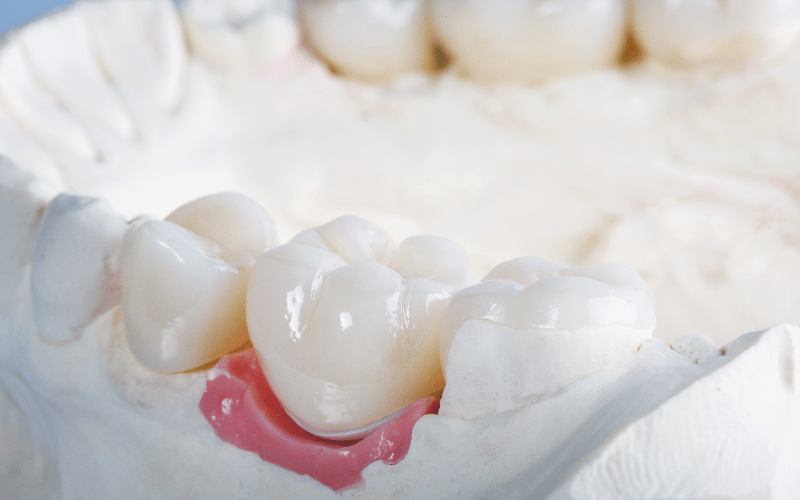Call: (810) 674-3060
All-On-4 or All-On-6 Dental Implants Procedure: The Better One

You may learn about the “all-on-4” and “all-on-6” dental implant procedures when you look into dental implants as a way to replace missing teeth. In the past, when a dentist did a traditional full mouth reconstruction, they would need to use 8 to 10 dental implants per arch to give the new teeth a strong enough base. In the “All-on” procedure, the dental implants are put into the jawbone at an angle. This gives the jawbone more space to hold a replacement tooth.
All-On-4 Dental Implants : What Is It?
Nobel, an American-Swiss company, got a patent for the All-on-4 dental implant technology in 2003. This is done by putting two vertical implants in the front, and two angled implants in the back of each arch. No grafting or sinus lifting is needed. With angled implants, prosthetic forces can be spread out in a stable way.
If you’ve already decided to get the “All on” dental procedure, you may wonder what the difference is between the all-on-4 and all-on-6 dental implants.
The number of implants put in the mouth is the most obvious difference between all-on-4 and all-on-6 dental implants. The more implants you have, the stronger and more stable your jawbone will be. When a dental implant is put in your jaw, it helps to strengthen the bone where it is put. Your teeth help keep the bones in your jaw stable in a way you can’t see. Without teeth, the bones in the jaw start to break down. Because of this, people who have worn dentures for a long time can sometimes look like they have a recessed jaw when they take them out. This can make someone look a lot older than they are. When someone gets dental implants, the jawbone is stimulated and kept strong. This keeps the face from looking sunken in.
All-On-6 Dental Implants: What Is It?
All-on-6 dental implants give the prosthetic dental arch a stronger, more stable base. This makes the smile last longer and feels better. When you think about how biting and chewing work, more stability and a more even pressure distribution may help your prosthetic arch last longer. All-on-6 is sometimes better than all-on-4, but not always. The All-on-4 dental implant procedure may be better for people whose bones aren’t strong enough to handle the pressure of the extra two implants.
About The All-On-4 Or All-On-6 Prosthesis Method:
On the All-on-4 and All-on-6 systems, there are three different types of prostheses:
Screw-retained porcelain crowns
They have a metal frame with layers of tooth- and gum-colored porcelain.
Zirconia crowns
They are held in place by screws: A framework made of milled zirconia with layers of porcelain in tooth and gum colors.
Hybrid Prosthesis
A titanium frame milled with composite layers in tooth and tissue colors.
What Is The Difference Between A Bridge Made Of Implants And A Hybrid Prosthesis?
You might be wondering what exactly a Hybrid Prosthesis is at this point. It’s not exactly like an implant bridge. It’s just a long bridge that looks like real teeth. This is possible with the help of several implants placed permanently in your mouth. First, you’ll have a temporary bridge. Soon, though, you’ll get a permanent set of teeth. With this procedure, you won’t have to take out your teeth as you do with dentures to clean them. Instead, keep your new teeth clean and healthy by caring for your mouth at home. Also, just like real teeth, these teeth will support the bones in your face.
Hybrid Implant
Unlike implant-supported fixed bridges, hybrid prosthesis replaces missing alveolar heights with the pink composite resin that holds teeth in place. Most hybrid prostheses need fewer implants, and the shape of the alveolar ridge isn’t as important because implants don’t have to be put “exactly where the teeth are.” This is because of abutments that change the angle (i.e., multi unit abutments). In other words, implant fixed prosthesis is a good choice when you need to replace teeth but don’t need to replace alveolar height. When there has been a lot of bone loss in the alveolar ridge, making the shape of the teeth less than ideal, hybrid restoration is a good choice.
An Implant Bridge
When treating people with no teeth, implant-supported fixed prostheses are an alternative to hybrid prostheses. This method involves putting in six to eight more implants per arch to support more than one bridge. The alveolar bone needs to be the right height and width for implant placement. Because of longer clinical crowns and uneven prosthetic contours, progressive bone loss can affect how the implant prosthesis looks and works. Our dentists and implantologists works very hard to provide best quality dental implants for you. You can visit our website to know more about All In 4 Dental Implants And All In 6 Dental Implants.




